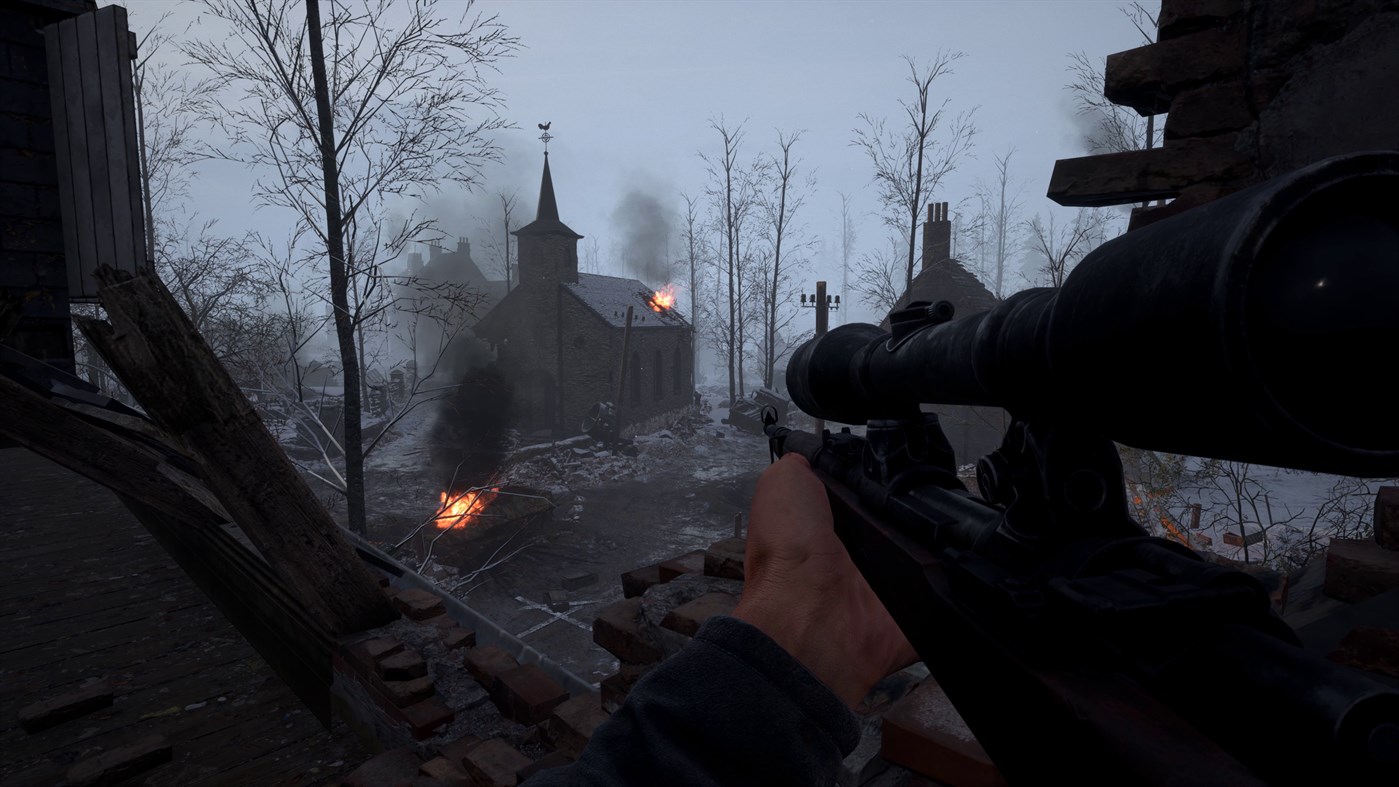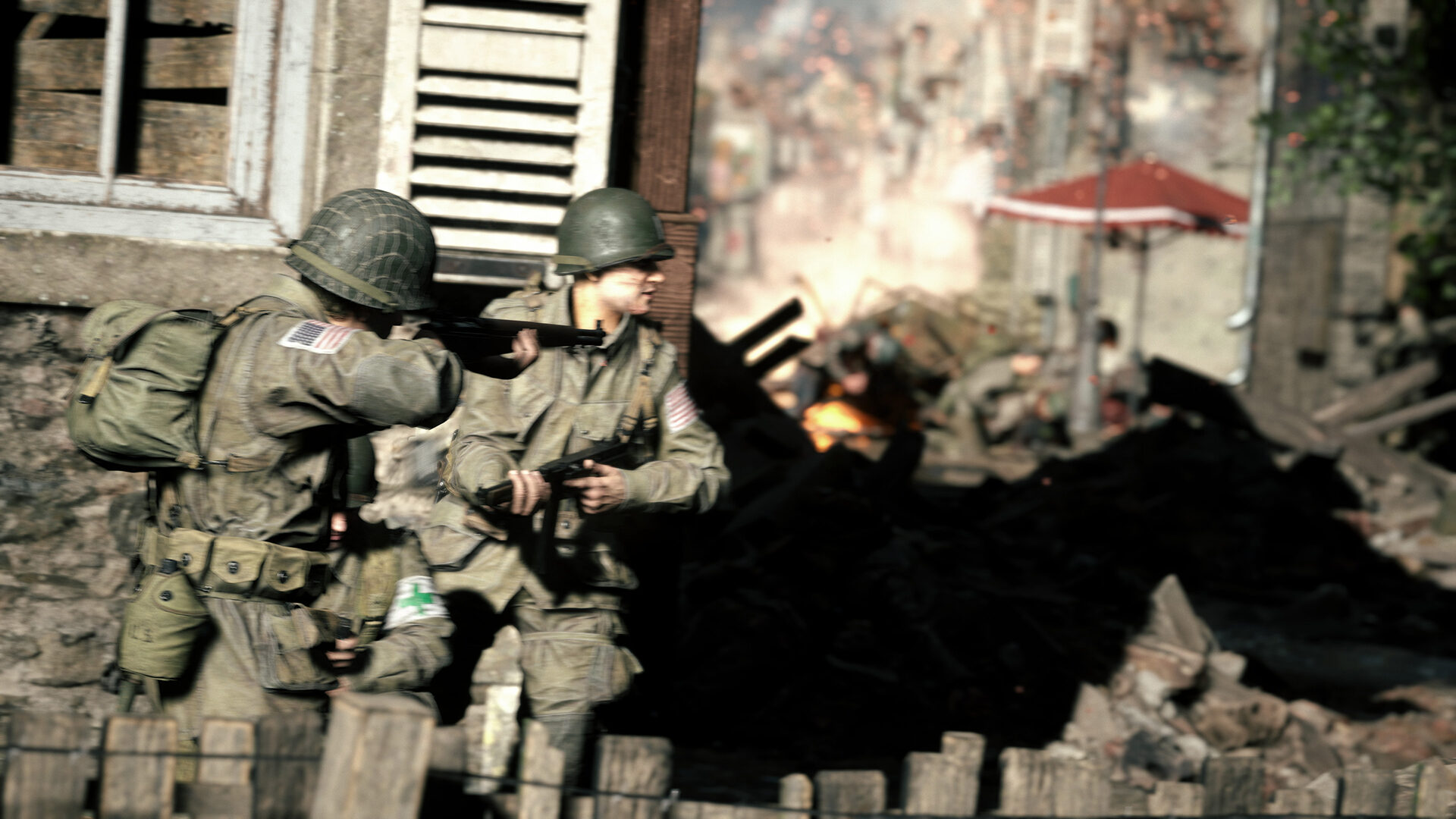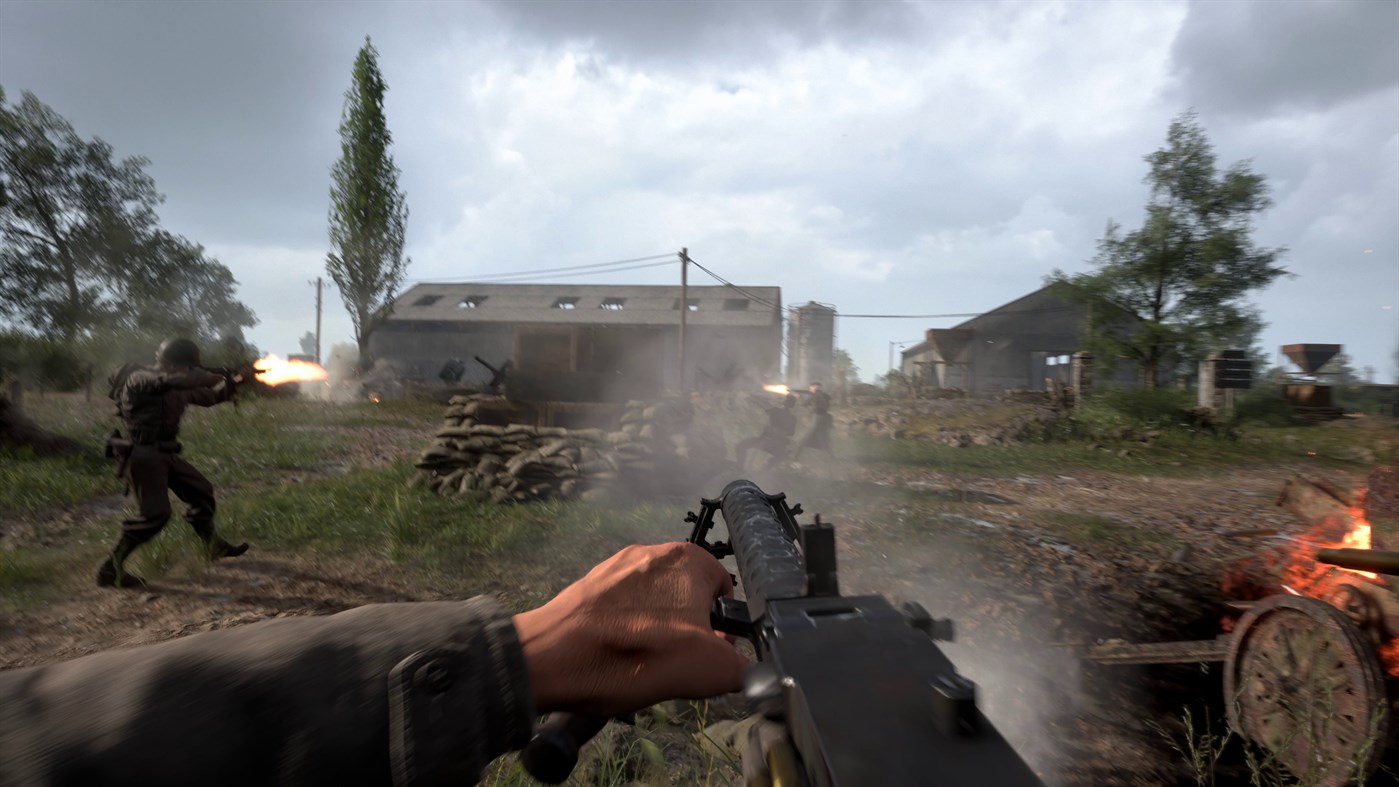Note: This review has been updated from the original version and given a final score.
I’ve been a console gamer since I was four years old and my dad bought me a Nintendo Entertainment System. Over the last three decades, consoles have fulfilled almost all of my gaming needs, especially with the rise of Xbox Live and online gaming. But as I got older and my go-to franchises like Halo and Battlefield started to lose me, my eyes began wandering over to PC gaming, where I could find the next evolution of shooters in the more strategic, hardcore titles—namely, Rising Storm 2: Vietnam and Hell Let Loose.
In particular, it’s Black Matter Studios’ World War II shooter that made me want to finally build my first gaming-ready PC. It presented the kind of experience that I’d been craving for a while now—a more grounded, realistic version of a genre that Battlefield and Call of Duty have moved away from. It’s a game that requires teamwork, patience, and communication. It’s a shooter where K/D isn’t everything, that offers ways to play other than firing your gun.
Hell Let Loose is also a game that I just never thought would come to consoles. Part of that was because of the performance issues I experienced on a PC that could more than handle the game’s demands. Even as the new Xboxes and PlayStation launched, I didn’t think it was possible to get that game working properly on a console. But my uncertainty about Hell Let Loose making it to console had mostly to do with the audience it would find there. PC players are used to playing niche, complex shooters; console gamers are too used to frag fests like Battlefield and Call of Duty and battle royale games like PUBG, Fortnite, and Warzone to accept something as laborious as Hell Let Loose.
It’s clear after playing Hell Let Loose on the Xbox Series X that my fears on both counts were unfounded. Not only does it run surprisingly well on console (for the most part), but the players that I’ve interacted with seemed more than willing to give in to the game’s charms and accept that, instead of being a super soldier on the battlefield, they were merely one of a hundred pawns fulfilling their particular roles.
Before getting into the specifics about the console version, let’s look at Hell Let Loose in general and why it’s possibly the most engaging shooter to come to consoles in a long time. Based on real battles of World War II (the developers have even recreated the locations of these battles on a 1:1 scale), Hell Let Loose is a 100-player first-person shooter with a deep strategy metagame. Every soldier on the field has a role to play, and how well those roles are played and how well the different squads coordinate their attacks and defenses—as opposed to who gets the most kills—are what truly determines the outcome of every match.

Teams are broken down into squads, with three types of squads available: infantry, armor (tank crews), and recon (one spotter and one sniper). Infantry squads contain a maximum of six players, armor three, and recon two, and each team can only have three armor squads and two recon squads on the field at any given moment. Each squad also has an officer that can communicate with the other squads’ officers. Finally, there’s the commander, who can communicate with all of the squads’ officers and provide support in the form of bombing and strafing runs, airhead spawn locations, and supply drops, as well as spawning new tanks and trucks—all while also playing as a soldier on the field.
When I say that every soldier has a role to play, I mean it, though most matches come down to how well infantry squads work together. Other than the officer, there are eight roles that a player in an infantry squad can play: rifleman, assault, automatic rifleman, medic, machine gunner, support, engineer, and anti-tank. Other than the rifleman, only one player can play each role per squad at any given time. Each role has at least two different classes that they can choose from, which determine which weapons and gadgets they’re bringing with them into battle.
While most of the roles are self-explanatory, it’s the support and engineer roles that are maybe the most crucial to winning a match. Support drops supplies that let officers build garrisons, which are the spawn points for a team. If your team doesn’t have any garrisons built (or the enemy has destroyed them), then you can only spawn on an HQ at the far end of the map or on an outpost, but only if your officer built that outpost. Meanwhile, engineers can build nodes, which gives the commander the resources they need to call in bombing runs and the like.
For my money, playing as a full squad that’s working together to support the team’s efforts is one of the most gratifying experiences you can have with a first-person shooter. Because you have specific duties to fulfill, no matter what role you’re playing, emergent objectives pop up all the time throughout the course of a match. One minute, you’ll be running supplies back and forth with a supply truck so you can build garrisons and nodes. Later in that match, you could be building defenses and anti-tank cannons to hold down a strong point. If you’re attacking, you could be sweeping the outer perimeters of a sector for enemy garrisons or trying to get around a tank so that you can shoot it in the butt with a rocket launcher. Maybe you’re just pinned down in some trenches, doing your best to stop an enemy squad from flanking the rest of your team.
These moments are given context by Hell Let Loose’s two modes: Warfare and Offensive. Warfare is a tug-of-war mode where each team is trying to progress further into enemy territory by capturing sectors. Offensive sets one team as the attacking force and the other as the defending force, with the attacking force needing to take every sector in sequential order. For those familiar with Battlefield, Warfare is basically Frontlines and Offensive is Breakthrough.
Warfare is by far the better mode, because it’s tug-of-war structure leads to the most interesting back-and-forth matches. If one team captures a sector, then the next sector opens up for capture. However, the other team can recapture that point and open up the next sector in the first team’s territory. Whichever team can manage to capture all five sectors or hold a majority of the sectors when the timer runs out wins the match. At certain stages of a match, it might be best to play defensively and hold onto the majority while a smaller group of squads makes some targeted attacks. Other times, you might find your team going all out on a desperate push to capture the sector that will give you the win. Offensive, meanwhile, is much more straightforward. It can lend itself to intense frontline battles, but it’s also much less interesting in terms of the strategies that you can employ.
All of these elements—roles, squads, strategies, emergent objectives, and game modes—are presented in an authentic-feeling World War II, Western Front package. Players are limited to the weapons that their factions (U.S. or German) use, with the only scopes being those given to the two snipers per team. While you can unlock different cosmetics, your characters won’t be looking like Battlefield V’s budget G.I. Joes.
Most importantly, the maps you play feel like actual battlefields and not highly authored maps. That doesn’t mean they don’t work for gameplay, because they do, and there are some obvious creative choices from map designers in terms of bunker and trench placements. But there’s something specifically naturalistic about the maps. Black Matter’s research and dedication to recreating locations like the snowy village of Foy and the dense foliage of Hurtgen Forest result in maps with realistic topography and distance. Fields, city streets, hills, and forests all feel like the real deal, and not shrunken, truncated simulations based on design choices.
Besides its performance issues, Hell Let Loose on PC was already a captivating and exhilarating experience. But the question is whether the console versions can capture the same magic. The short answer is yes. In many ways, it’s a better experience on Xbox Series X/S and PlayStation 5.

One of the reasons that Hell Let Loose works so well on console is that there’s a parity of experience among everyone that’s playing. If you’re hiding in some tall grass, you can safely assume that the same tall grass has been rendered for the enemy, too, and they can’t see you. Having the game world appear the same to all players might seem like a given to console gamers, but it’s just not the case on PC where some will turn down their graphics settings for performance’s sake and inevitably experience the game differently. It’s just nice to know that, when you inevitably get shot, it wasn’t because you wanted to play on higher graphical settings.
This probably has something to do with the fact that Hell Let Loose has lower benchmarks to clear when it comes to acceptable performance on console. Where PC players expect to be able to get hundreds of frames per second, the console version only really needs to hit 60 to be both acceptable and playable. Despite a few hiccups that were more due to server issues and less to do with the game’s performance, Hell Let Loose keeps going at a steady clip on the Series X, even in the busier sections of the maps asset-wise, while still managing to look good. There is some texture pop-in at much longer ranges, but nothing that drastically impacts gameplay, especially when everyone is shooting at one another with gamepads and not on keyboard and mouse. The only time that I experience severe frame drops is when I look through my binoculars as either an officer or recon spotter. The magnification, which is loading in assets that are technically further away from the player, seems to halve the frame rate, though it is still playable and doesn’t interfere with combat.
The console parity and the fact that everyone is playing on controllers, which makes the guns just a bit more cumbersome to use, leads to much more intense and fun engagements. It feels more possible to dart from cover to cover as the map design intends, or to roadie run alongside a hedge to cross an open field, when you aren’t getting instantly headshotted by someone who is aiming with a mouse. Unlike in the PC version, it’s incredibly rare to get killed by someone you can’t see. Most of the time, you know how you died and why, and it leads to a more rewarding gameplay experience overall. (This also means that normal German infantry, who are equipped with a bolt-action rifle, as opposed to the semi-automatic Garand on the U.S. side, are at a slight disadvantage, though that doesn’t necessarily change anything from the PC version.)
What most impressed me about the console version is how well the controls translate to a gamepad. Hell Let Loose is a complex game with a lot of moving parts, a lot of which involve communicating on various channels both with your squad and with other officers. Pulling up the map, marking targets, using various gadgets, and then aiming and firing your weapon are all mechanics that you have to be able to swiftly and smoothly transition between, and Hell Let Loose’s default control scheme lets you handle all of this with ease. The two radial menus on the Xbox controller’s bumpers—one for switching between squad and proximity chat, and the other for changing your gadgets—go a long way toward making this juggling act possible, and it’s fairly intuitive once you figure it all out. I’d go so far as to say that, now that I’ve got it down, I’d rather play Hell Let Loose with my Xbox controller than my keyboard and mouse, as I still get tripped up with the latter sometimes.
But the thing that has surprised me the most about playing Hell Let Loose on console, at least so far, is how willing the players I’ve encountered are to accept and adapt to the complex metagame that Black Matter has created. Hell Let Loose isn’t just about who gets more kills; it’s about who can control more territory, who can create more spawn points, and who can build more nodes so that their commander can call in useful perks like bombing runs and spy planes. All of these elements that truly determine the outcome of a match, much more than the amount of kills each team has, require multiple people working together to complete objectives.
Don’t get me wrong: Console players have a long way to go. I’ve played several matches where my squad was the only one placing garrisons, which are the spawn points that your entire team can spawn on and maybe the single most important thing in the game. It’s rare to have a commander yet, considering you need to be at least level 10 to be one, and rarer yet to have a squad with an engineer that’s building nodes for the commander to use.
The game is partly at fault for these issues; it doesn’t do a great job explaining the complexities of the game to newcomers, leaving the bulk of the education to extracurricular sources like YouTube tutorials. But there’s also the idea that the kinds of shooters that have until now been available on console have never really required deep strategic thinking or coordinated teamwork. Console players have developed years of muscle memory for simply running and gunning that they have to unlearn when they jump into Hell Let Loose.
Still, whenever I create a squad and get on mic to coordinate with my teammates, magic happens. Not only do the teammates communicate back, but they are also willing to learn about the intricacies of the game. They’re willing to not just charge headfirst into the closest firefight, but to go on longer flanks to drop supplies and set up garrisons. They’re willing to switch classes and play their roles. And best of all, they aren’t spewing racist or sexist crap just because they think it’s funny to yell garbage at a bunch of strangers. This was my biggest fear about Hell Let Loose coming to consoles, and so far, my fears have been unfounded.
The one place where Hell Let Loose’s console version is somewhat lacking is in its matchmaking. So far, there’s no server browser, which means console players are restricted to quick matching.
It’s not that it doesn’t work, and in some ways it works better than it does on PC, where you can either wait in a queue to get into a full match on a rented server or load into one with 30 out of the max 100 players. However, Hell Let Loose’s lack of options when it comes to quick matching can result in playing the same map three times in a row: once in Warfare, then twice in Offensive where each team plays as attackers. Because of this, you’ll end up replaying the same maps over and over again. All Black Matter needs to do is set up two different playlists for Warfare and Offensive, though this might split the playerbase. Still, considering there’s cross-play between Xbox and PlayStation and most of the early matchmaking issues seem to have been resolved, there are plenty of players to go around, at least at launch.
Besides that, Hell Let Loose on console has been nearly everything I wanted it to be. As the console playerbase continues to learn the game’s intricacies and how crucial communication is, the game will get even better with time. In a genre that’s full of arcade-y movement and gun mechanics, Hell Let Loose truly stands apart as a unique experience on console, and hopefully it will serve as a pioneer for more developers to put their more strategic, hardcore shooters on Xbox and PlayStation.

Images: Team17
|
★★★★★
Hell Let Loose is one of the most unique and fulfilling first-person shooter experiences that a console player can have. Its deep strategy metagame and intricate mechanics can be intimidating to new players, but if you stick with it and give it the time it needs, Hell Let Loose will reward you with emergent and unforgettable moments. |
Developer Black Matter Studios Publisher Team17 ESRB M - Mature Release Date 10.05.21 |
| Hell Let Loose is available on Xbox Series X/S and PlayStation 5. Primary version played was for Xbox Series X. Product was provided by Team17 for the benefit of this coverage. EGM reviews on a scale of one to five stars. | |

Michael Goroff has written and edited for EGM since 2017. You can follow him on Twitter @gogogoroff.